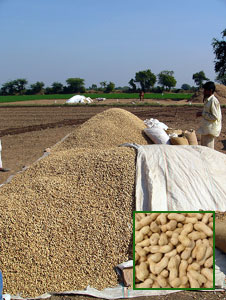|
|
|
|
|
|
|
|
|
|
|
Gujarat Hotels |
|
|
 |
| |
|
|
|
|
Gujarat Economy |
|
|
Industries in
Gujarat
There were 20,050 (provisional) registered working
factories and about 2,56,388 small scale industrial
units on March 31, 2001. Establishments engaged in the
manufacture of cotton textiles provide employment to a
major portion of the industrial workers followed by
the manufacture of non-metallic mineral products.
These two industries together provide employment to
31.49% of the industrial workers. There was a
development of industries like Chemicals,
petrochemicals, fertilizers, engineering, electronics
etc. With the largest Petro-chemical complex in the
country, Gujarat is a major producer of inorganic
chemicals such as soda-ash and caustic soda as well as
chemical fertilizers. The establishments engaged in
manufacturing of machinery and machinery tools and
parts except electrical machinery, manufacturing of
wool, silk and synthetic fiber textiles and basic
metal and alloys industries cover 30.50% of the total
industrial workers. Other manufacturing products are
rubber, plastic, petroleum and coal products,
transport equipments and parts, food
products etc. |
|
|
A large number of small scale industries are pertaining to
metallic work, chemical industries, machinery except
electricity and transport, cotton industry and non metallic
mineral work etc. The most remarkable feature of Gujarat's
recent industrial development has been the growth of the
dairy industry, much of it conducted on a cooperative basis.
There are now 15 milk processing plants with a production
capacity of 3.2 million litres per day, which is the first
in India. The membership of the dairying cooperatives
exceeds 1 million. Of these the Kaira District Coperative
Milk Producers Union (Anand) is the best known. To support
milk production there are over 10 factories processing
1500-2000 tonnes of cattle feed per day. There is production
of oil and natural gas in Ankleswar, Cambay and Kalol and a
oil refinery at Koyali. Gujarat Industrial Development
Corporation (GIDC) have developed around 257 mega industrial
estates at Jhagadia, Vagra, Savli, Dahej, Anklaseshwar etc.
Jamnagar, Porbandar, Jafrabad, Bhavnagar are centers of
industry and trade. |
|
|
|
Agriculture in
Gujarat
Agriculture in Gujarat forms a vital sector of the
state's economy. It provides the required food grains
for the state's population and raw materials for most
of the agro-based industries. Unsuitable climatic
conditions in some parts and rocky terrain with thin
or no soils in others, have limited the area suitable
for cultivation. The difficulty of drainage in coastal
areas and in the two Ranns have made a large part of
the state agriculturally unproductive. The state's
agricultural productivity is low. The yields are poor
and in most cases do not even meet the total average
yield of the country. Low yields result from poor
soils, inadequate rainfall, frequent drought and
flood, bad drainage and undeveloped irrigation
facilities. The main feature of the state's
agriculture is its cropping pattern reflected by the
variations in climate and topography. The high yield
of cotton is the highest in the country, and reflects
the overall emphasis on cash crops, which has claimed
the best agricultural land. A higher percentage of the
land is used for cultivation in central Gujarat. Kaira,
Baroda, Broach and Surat districts are the main
contributors to the
|
 |
|
|
agricultural production of
the state. Valsad has become India's first integrated
horticulture district. Groundnut (highest production in the
country), Cotton, Tobacco (second highest production in the
country), Isabgul, Cumin, Sugarcane, Jawar, Bajra, Rice,
Wheat, Pulses, Tur and Gram are the important crops of
Gujarat. Another cash crop which has recently entered the
field in a few selected localities is banana. Plenty of
mangoes for export as well as home consumption are part of
cash crops. Honey, wax and bamboo are produced in fair
quantities in different forests and medicinal herbs and
fruits like Jamun and guava are produced in plenty. Forests
also yield considerable quantities of teak, Khair, Sadad,
Hadariyo, manual bamboos and good quality of wood. |
|